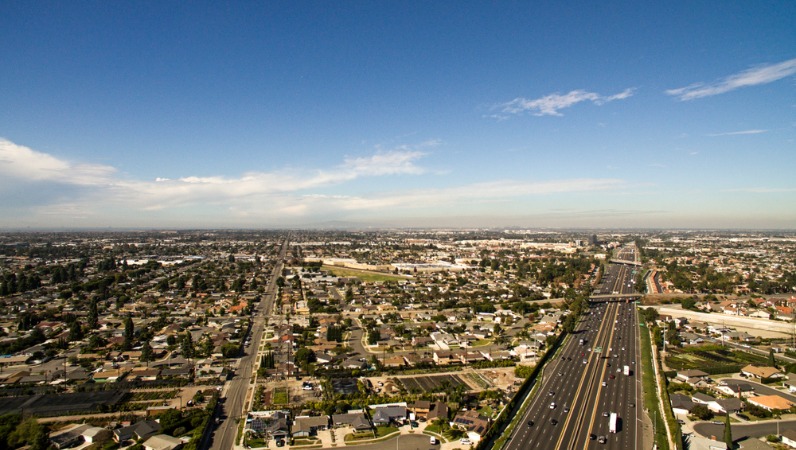Large Urban Counties’ Priorities for 2022
.png)
Zencity
The Platform for Community Trust
I recently had the opportunity to attend the Large Urban County Caucus (LUCC) hosted by the National Association of Counties (NACO). The meeting took place in De Kalb (pronounced de cab) county in Georgia, who proved to be excellent hosts. De Kalb is a county of over 764,000 residents. NACO defines a large urban county as a county with over 500,000 residents that sits close to or is part of a metropolitan area. Nearly 50% of Americans live in 133 urban counties with a total population of about 160 million residents.
As you would expect, there was a lot of discussion about the recent infrastructure bill and the American Rescue Plan (ARPA), including discussions on how counties are prioritizing this federal funding. Drilling down on the different investment areas that counties are prioritizing gives great insight into the major challenges large urban counties are tackling in 2022:
- Health Programs – Counties are still investing large amounts of money in battling the COVID-19 pandemic. But the pandemic has brought to the forefront other pressing health issues like mental health and substance use. In Camden County, NJ, drug overdoses and the need for mental health and related services have increased during the COVID-19 pandemic. They are investing $2 million of their funds from the Coronavirus State and Local Fiscal Recovery Fund (part of the American Rescue Plan) in mental health.
- Human services, children, and families – 68% of county plans include investment in human services, children, and families. These investments include childcare training, childcare grants and subsidies, after-school enrichment programs, and educational support at libraries. Counties are also investing in providing wrap-around services for children and families who are in the child welfare program. Travis County, TX, is piloting a non-traditional work hours childcare program in alignment with ARPA priorities. They, too, are using recovery funds to expand contracts with partnership organizations that help with child and family issues. This focus seems to align well with what counties are hearing from their residents. In a recent survey about ARPA community funding priorities in Nueces County, TX, residents want to prioritize households in need (56%), school programs (68%), homelessness (56%), and other issues related to children and families.
- Transportation & Infrastructure – 19,713 bridges and 163,240 road miles are owned and maintained by large counties. Counties invest approximately $134 billion annually in infrastructure. With the passage of the infrastructure bill, counties have a great opportunity to upgrade outdated bridges and roads in need of repair. One of the biggest priorities for counties is the direct allocation of funds to local infrastructure and ensuring that the local bridges in new and existing programs are eligible. In view of this, counties are looking to partner with the federal and state governments and to have a say in how the monies are spent on a local level.
But, infrastructure doesn’t only mean roads and highways – one of the biggest projects will be broadband accessibility. $65 billion of the total Infrastructure Investments and Jobs Act (IIJA), much of which will be spent in counties. Counties are looking to erase the digital divide and digital inequity by connecting more rural and underserved communities to high-speed internet. Nearly half of Black, Indigenous, and people of color do not have broadband access. Rural areas also lag behind urban ones in having no broadband connections. - Workforce & Employment – COVID-19 has completely changed the economy. Many people lost their jobs and have not recovered from the financial impact. How can counties help? Social media posts from Upson County, GA, have proven to be very helpful to people looking for a job. According to a Zencity insight, the County has shared about job fairs, job opportunities and job skills and training. All these posts have been very popular with residents. Another great example of the county’s seeking to assist with employment comes from Franklin County, OH, which has been supporting economic mobility with its Building Futures program that provides a 12-week apprenticeship in construction trades and continues that support after completion.
- Diversity, Equity, and Inclusion (DEI) – What does it mean to invest in DEI? One of the most common ways right now is to ensure that ARPA funding is allocated equitably. In Los Angeles County, CA, $456.5 million has gone to the Care First, Jails Last program, which supports initiatives for alternatives to incarceration and to address longstanding inequities in their community. Oakland County, MI, is using its funds to provide financial assistance for residents who face barriers to education and other credential programs. The program is meant to provide a “college counseling corps that increases enrollment and retainment in postsecondary programs and a fund that provides a last-dollar commitment to eligible adults to completing their associate degree or industry certificate,” according to David Coulter, Oakland County Executive.
Each one of these priorities is interconnected and depends one upon the other and upon the support of residents. Using resident feedback has helped and continues to help counties understand what the true needs and priorities of their communities are. ARPA is a once-in-a-lifetime opportunity that will give local governments the ability to provide sustainable and impactful services to their residents.
%20copy-1.png?width=544&height=120&name=Logo_black%20(1)%20copy-1.png)



